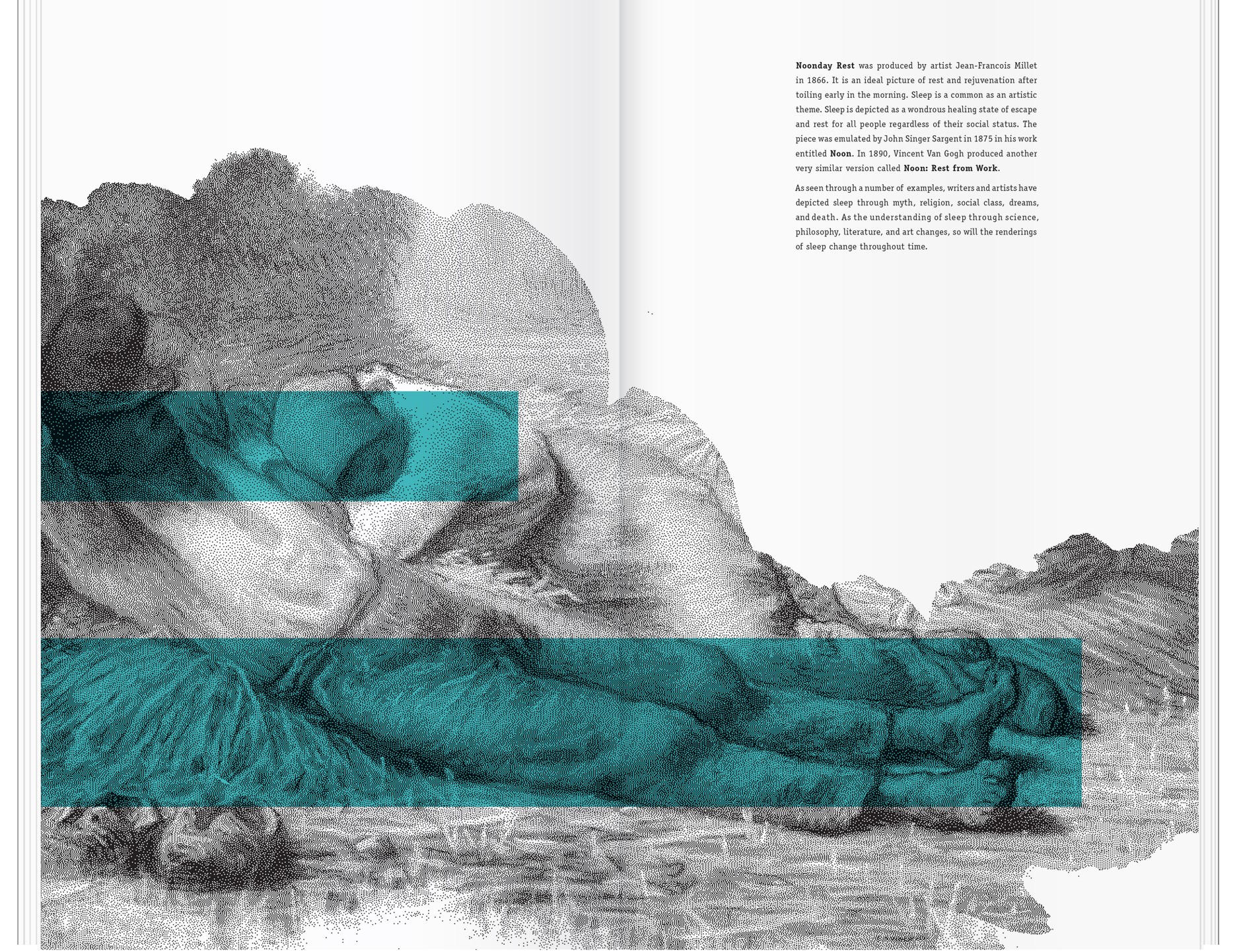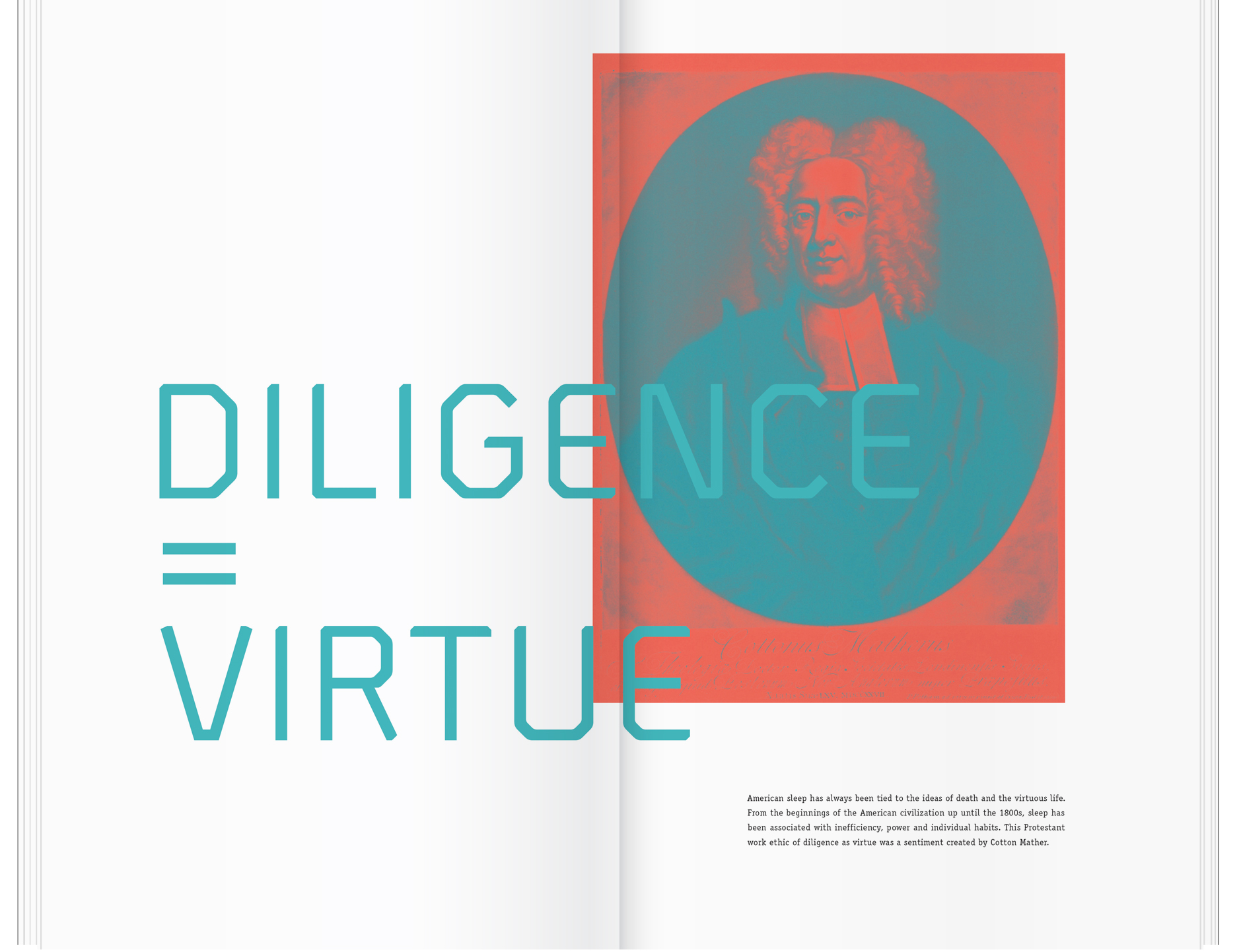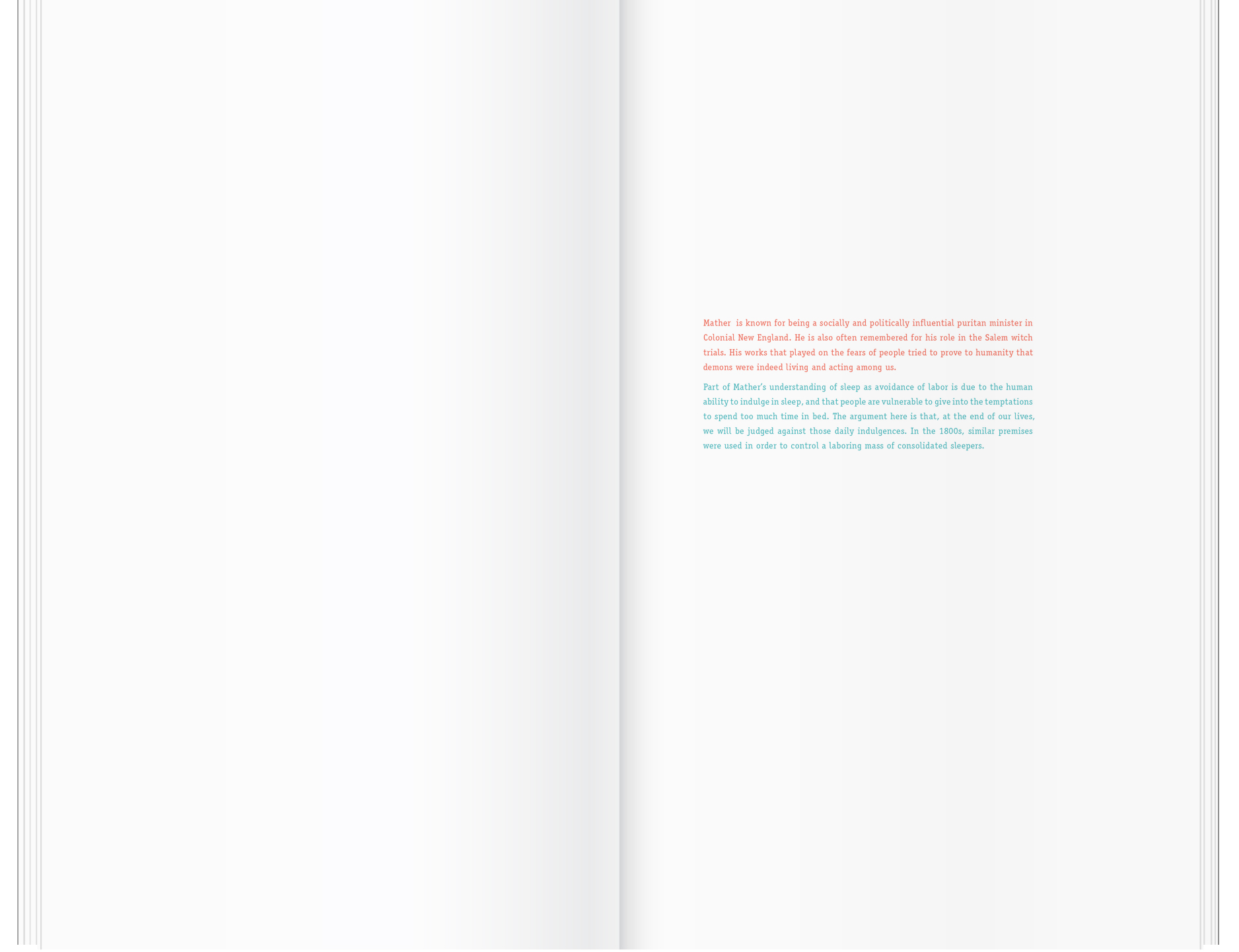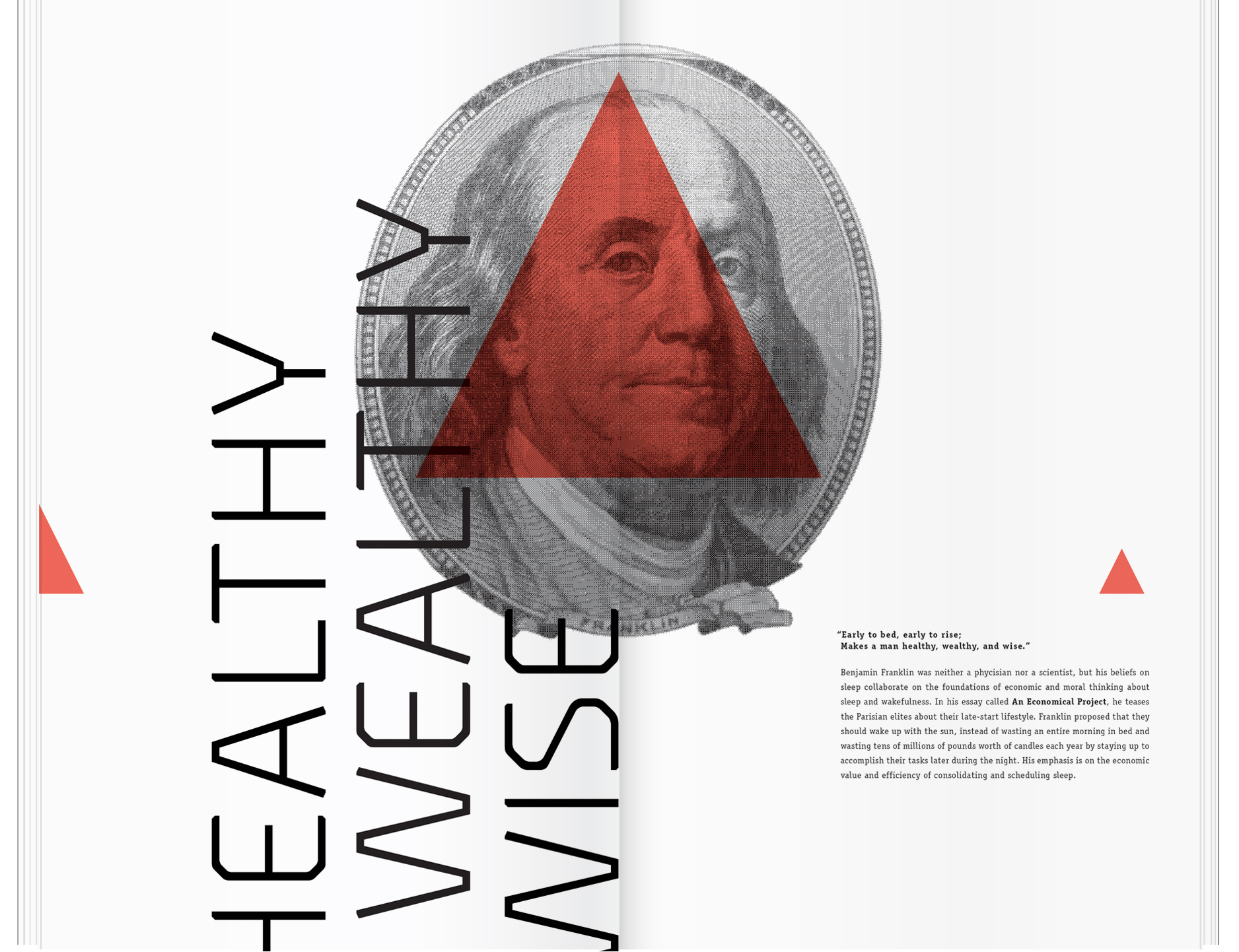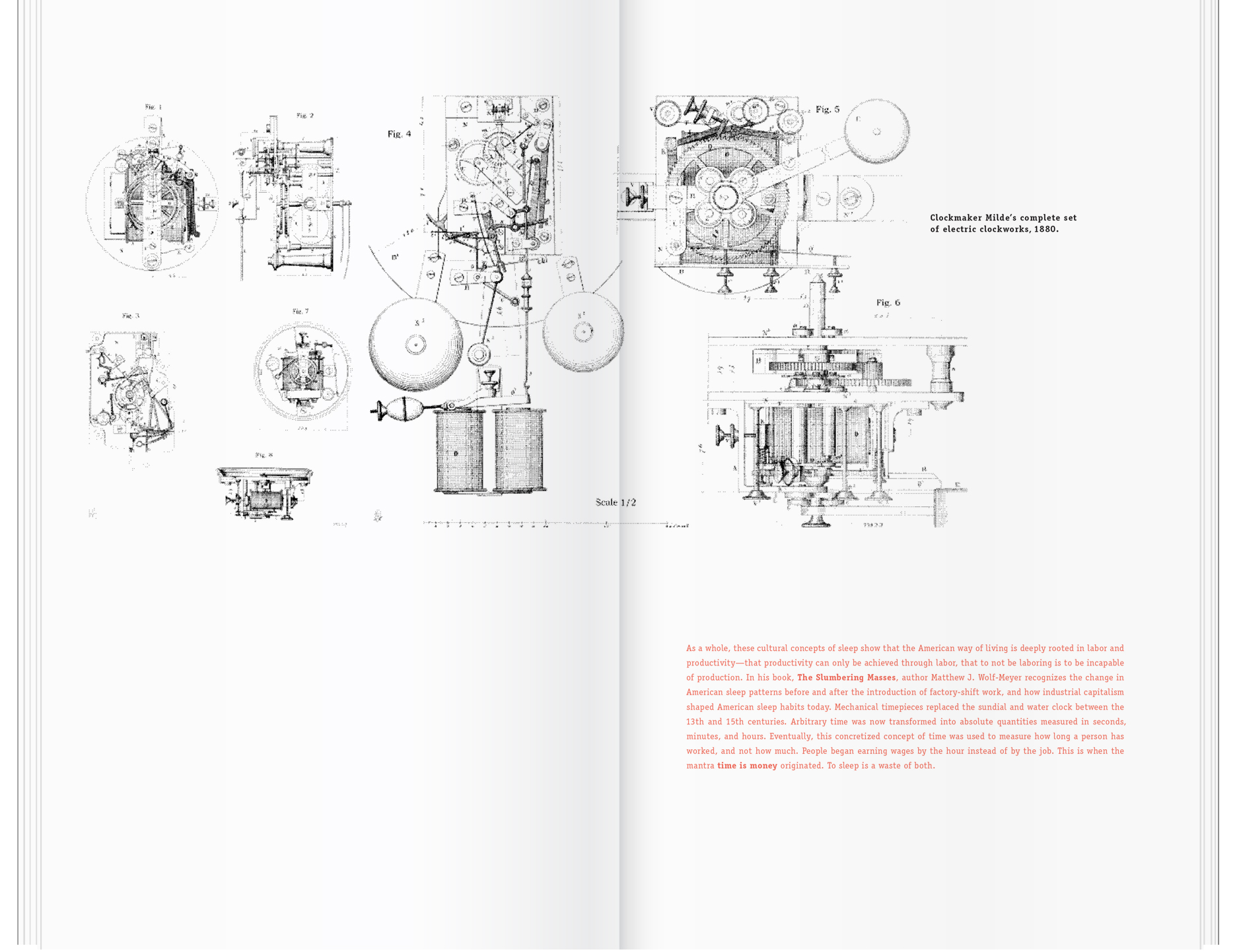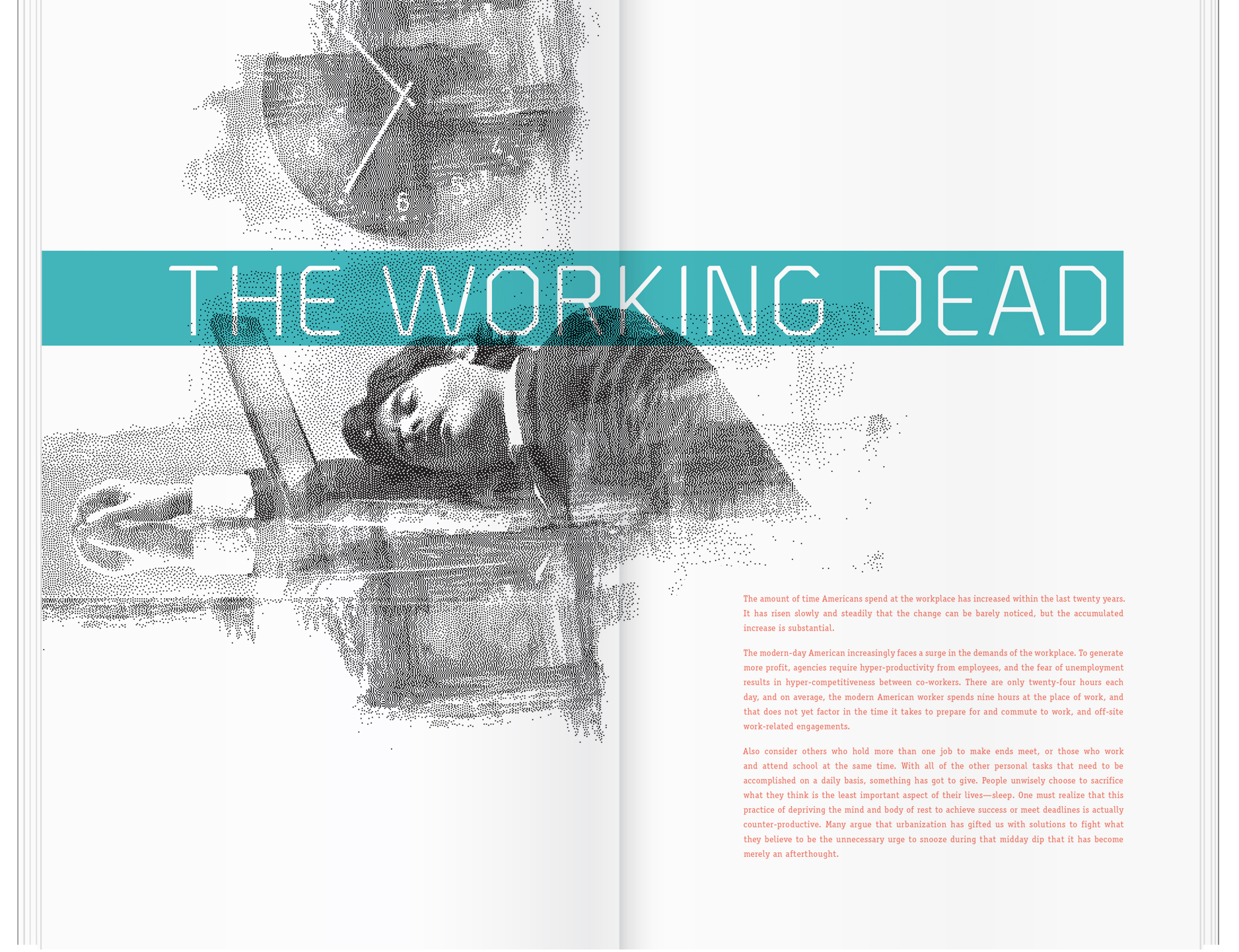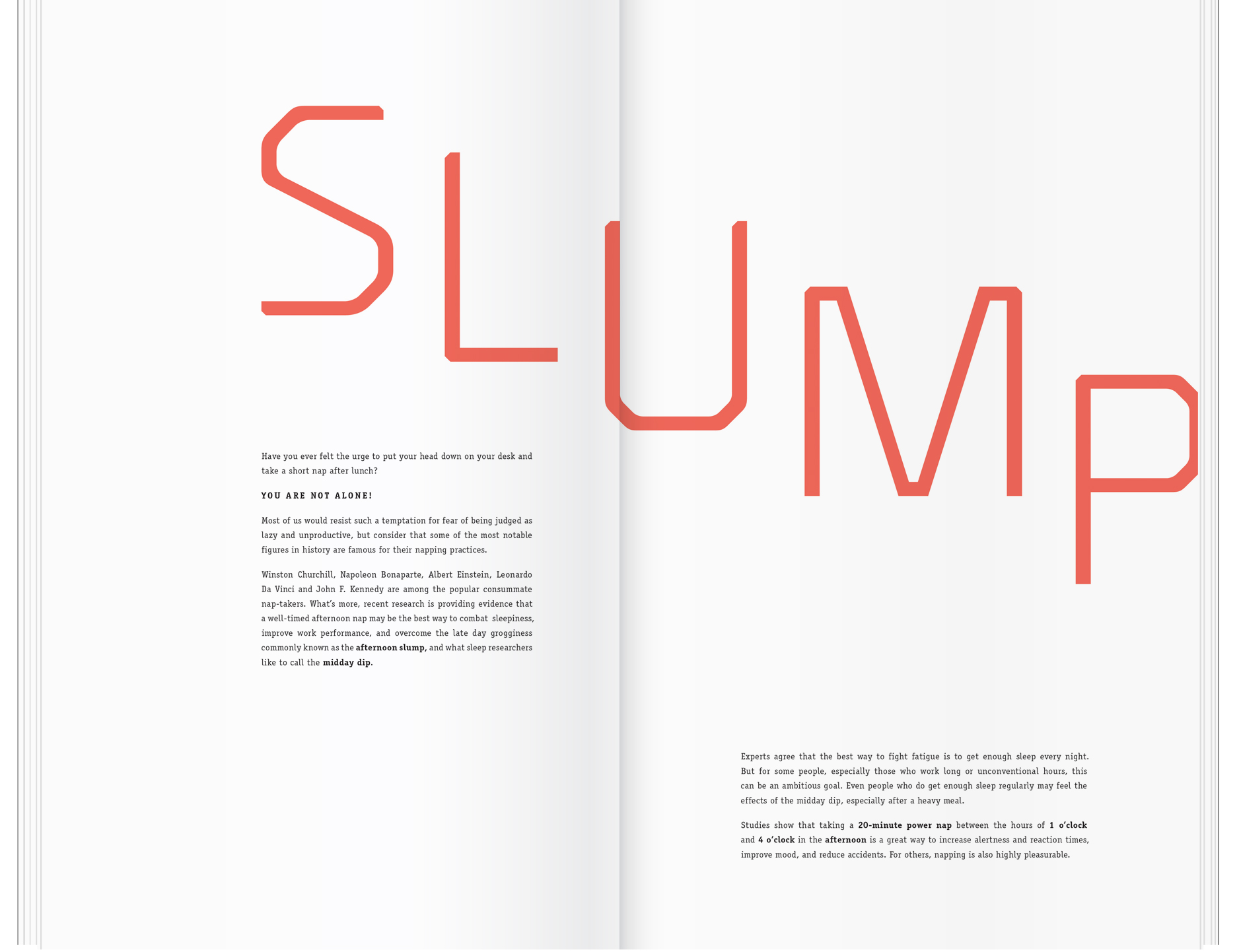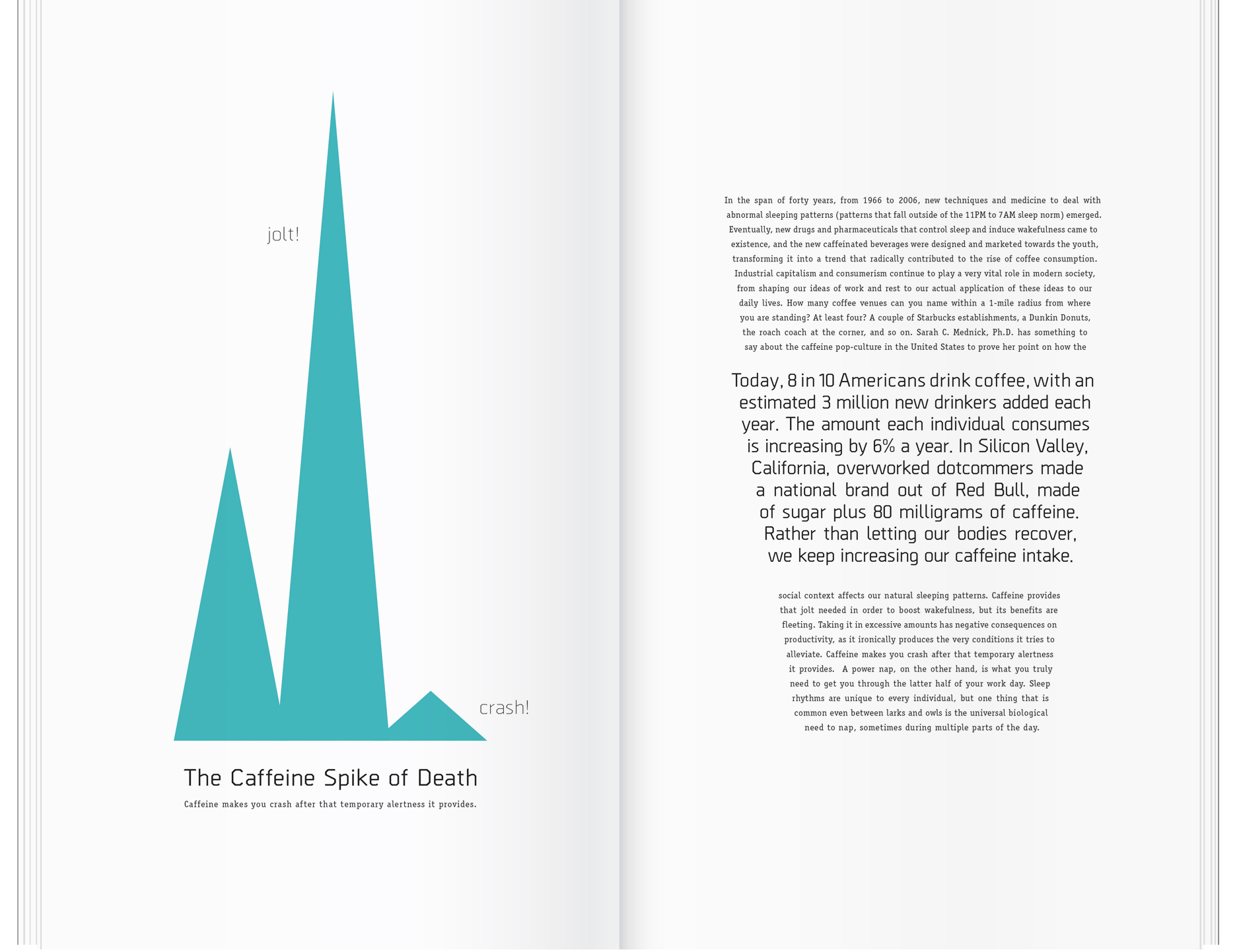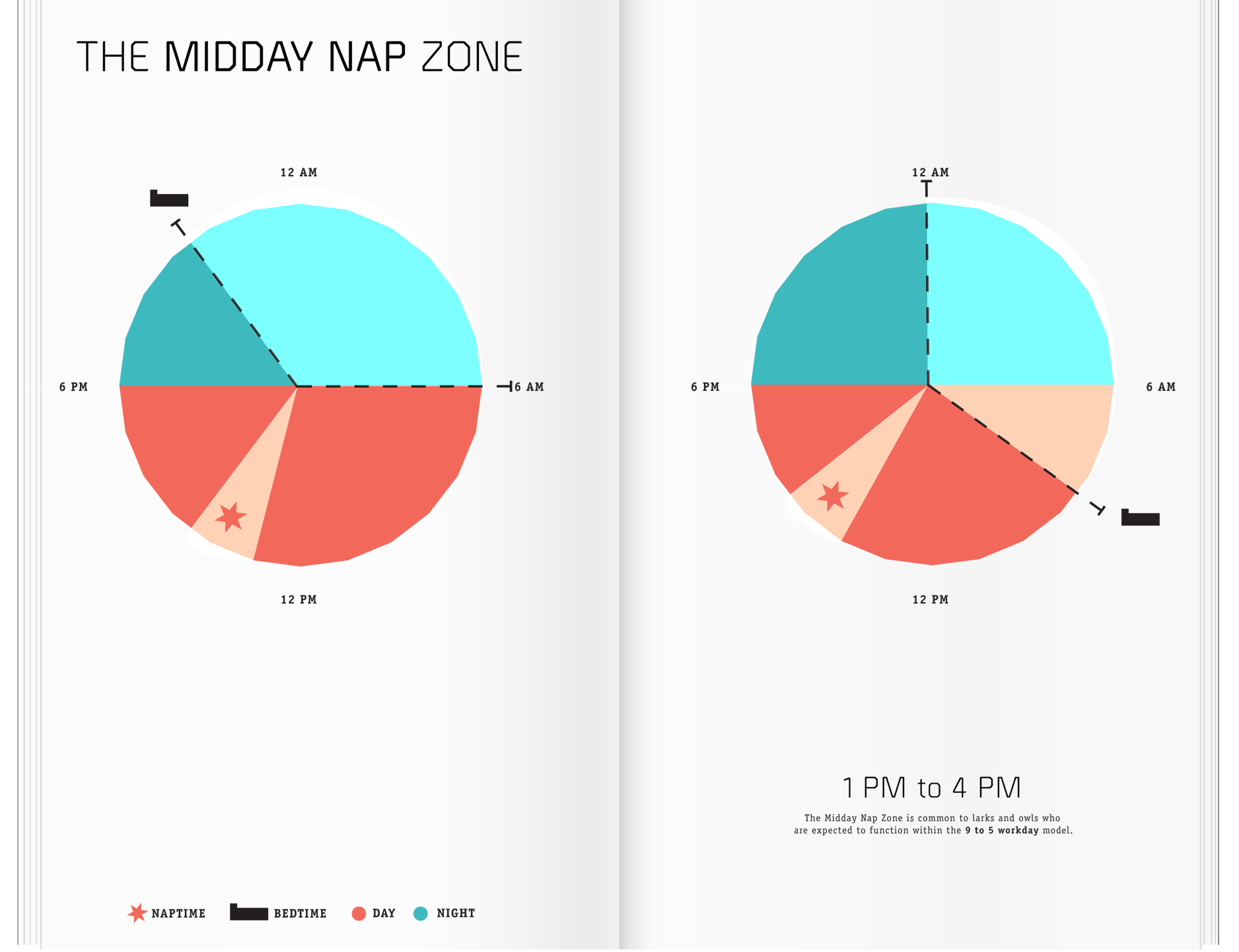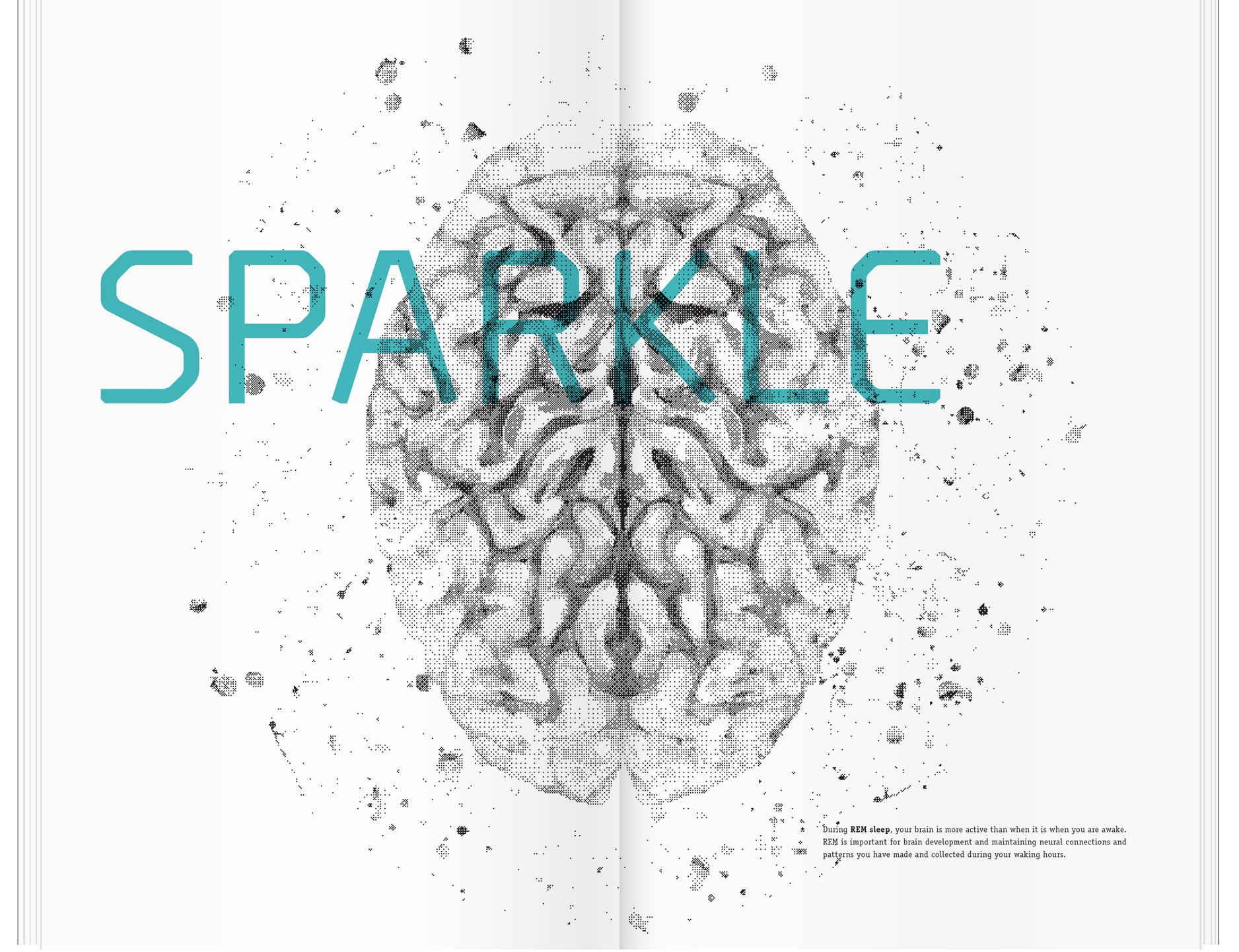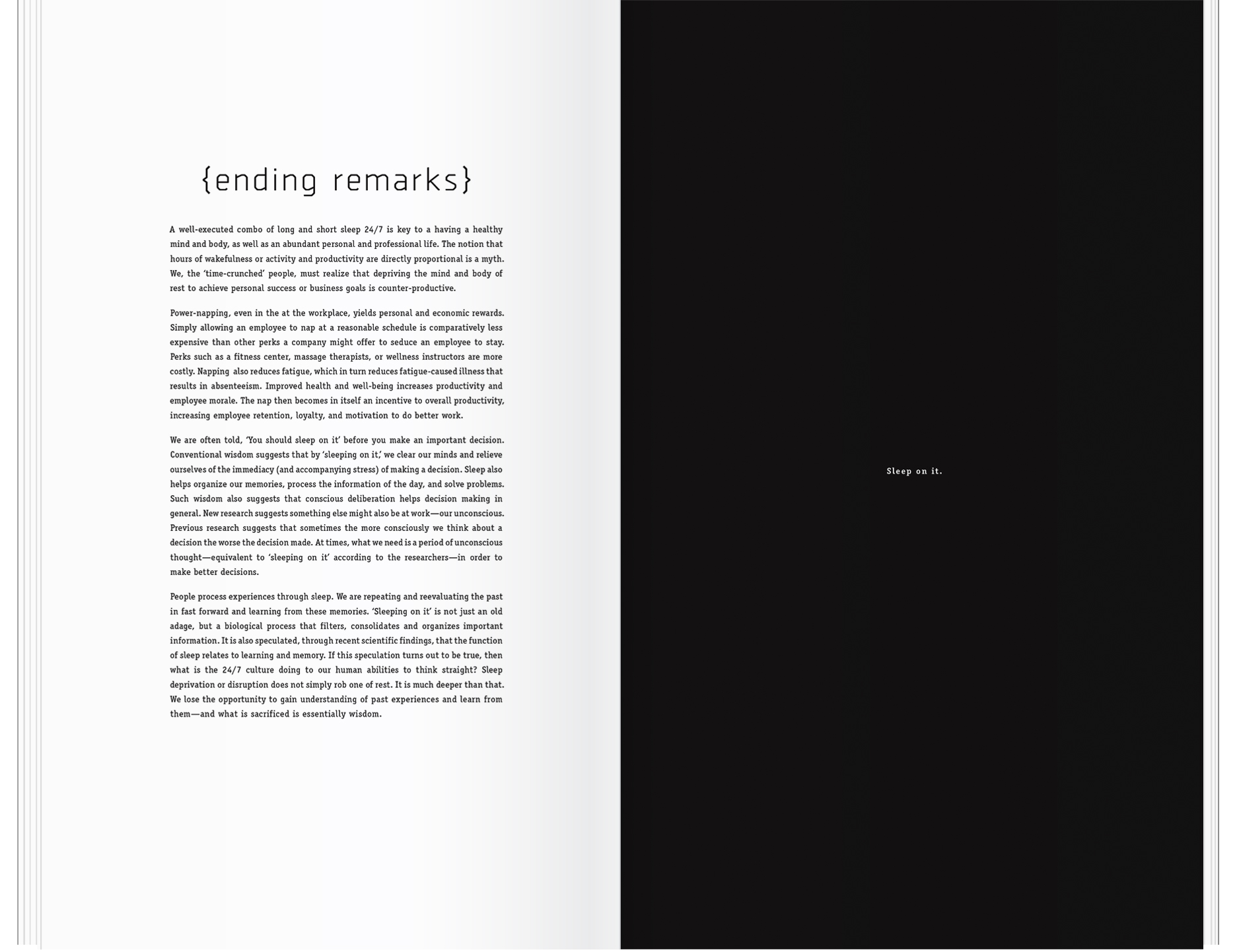Senior Thesis
This thesis stemmed from my curiosity of the 24/7 lifestyle in NYC, and then evolved into an exploration of how the normative ideas of sleep throughout history have shaped — and continue to shape — urban America in terms of labor, health practices, and personal priorities. The necessity for sleep has very little to do with laziness or incompetence, and everything to do with physiology and biology. The aim is to build a sound argument for proving how beneficial it is to strategically add long and short sleep into one’s daily schedule while enjoying freedom from worrying about being perceived by others as a slacker.
hand-bound
inkjet, Epson 1400
view the poster here
The DIY die-cutting was fun for me, to say the least. I've never done it before.
The book was divided into two parts. The first section describes how sleep was portrayed in art and literature. Prior to the American Gilded Age, also known as the Industrial Age, most of the documented observations of sleep were made not by the kind of scientists that we know of today, but by the fine artists, poets, and writers. During the Renaissance period, the artists not only had the mental agility to move back and forth between the sciences and the arts with ease, but they also had the ability to integrate both of these fields.
Challenge: Display pieces made by different artists in a consistent and unified manner throughout the entire book, along with my own digital illustrations.
Solution: Making use of a limited color palette, and careful stylization of paintings into bitmapped digital images. The dots or pixels are reminiscent of sand – used in an hourglass to tell the passing of time, or the magical kind that the mythical Sandman sprinkles onto our eyes when we go to sleep.







